Background
I'm trying to compare noisy and noiseless naive deconvolution and I kind of ran into a wall on the noiselesss deconvolution step that I feel is very particular and I have no idea why it is occurring. Essentially I have a 256x256 input image, x and I want to convolve it with a filter h, that is a identity matrix of size 21x21.
Problem
In the deconvolution step:
X = Y/H
I'll obviously run into problems because H has zeros in it and my x will have nan values. So I tried to add a very small term like 1e-20 to H. For some reason only 1*10^-9.5 works. I'm not sure if its my code or if its the way matlab works.
Code V1.0
%% Naive Deconv
x = imread('C:/Users/chang/OneDrive/Desktop/UCLA/Winter 2020/EE 211/BSDS300-images/BSDS300/images/train/94079.jpg');
figure(10), imshow(x)
disp(size(x))
targetSize = [256 256];
rect = centerCropWindow2d(size(x),targetSize);
img_crop = imcrop(x,rect);
figure(20), imshow(img_crop)
x = rgb2gray((img_crop));
%x = mat2gray(x);
x = im2double(x);
figure(30), imshow(x)
n = 21;
h = eye(n) + 1*10^(-9.5);
% h = exp(h)/sum(exp(h))
h = h./n;
X = fft2(x, 276, 276);
H = fft2(h, 276, 276);
Y = X.*H;
y = ifft2(Y);
disp(size(y))
targetSize = [276, 276];
rect = centerCropWindow2d(size(y),targetSize);
y = imcrop(y,rect);
figure(40), imshow(y)
Y = fft2(y);
H = fft2(h, 276, 276);
X = Y./(H);
x = ifft2(X);
figure(50), imshow(x)
x = imcrop(x,[0 0 256 256]);
figure(60), imshow(x)
Code V 2.0
%% Naive Deconv
x = imread('C:/Users/chang/OneDrive/Desktop/UCLA/Winter 2020/EE 211/BSDS300-images/BSDS300/images/train/94079.jpg');
figure(10), imshow(x)
disp(size(x))
targetSize = [256 256];
rect = centerCropWindow2d(size(x),targetSize);
img_crop = imcrop(x,rect);
figure(20), imshow(img_crop)
x = rgb2gray((img_crop));
%x = mat2gray(x);
x = im2double(x);
figure(30), imshow(x)
n = 21;
h = eye(n) + 1*10^(-12);
%h = exp(h)/sum(exp(h))
h = h./n;
X = fft2(x, 276, 276);
H = fft2(h, 276, 276);
Y = X.*H;
y = ifft2(Y);
disp(size(y))
targetSize = [276, 276];
rect = centerCropWindow2d(size(y),targetSize);
y = imcrop(y,rect);
figure(40), imshow(y)
Y_hat = fft2(y);
H = fft2(h, 276, 276);
X_hat = Y./(H);
x_hat = ifft2(X_hat);
figure(50), imshow(x_hat)
x_hat = imcrop(x_hat,[0 0 256 256]);
figure(60), imshow(x_hat)
Results
For version V1.0, below is h buffered with values of 1*10^-9.5 on the right and h buffered with values of 1*10^-9.5 on the left.
Between Code V1.0 and V2.0 all I did was change a few variables (for clarity when writing this post) and now in V2.0 I'm strictly limited by 1*10^-12. So I believe I might have a coding error? When I don't use 1*10^-12 in V2.0 I get a black image and the following warning message:
"Warning: Displaying real part of complex input."
Question
I'm very curious to why this is occurring? I can't really tell if its because of how fft behaves or if its a bug with my coding, but I obviously need to do some research. I'm just posting here in case someone knows or if there is a related question that I have not found yet. Here's a the closest related post I could find, post, but I haven't even gotten to the step where I will eventually add noise so the problems are probably completely separate.
Updates/Next steps taken so far
According to this post, fft and zero padding, I could try to use padarray to increase resolution?
Aside I'm now realizing this isn't a crucial problem since nobody does deconvolution this way and I should probably just move on, but I'm just so confused why this happening.

